Intramolecular aldol condensation :
The aldol condensation also offer a convenient way to synthesize molecules with five and six membered ring.This can be done by an intramolecular aldol condensation using a dialdehyde, a keto aldehyde or a diketone as the substrate.The major product is formed by the attack of the enolate from the ketone side of the molecule that adds to the aldehyde group.The reason the aldehyde group undergoes addition preferentially may arise from the greater reactivity of aldehyde towards nucleophilic addition.In reaction of this type five membered rings from far more readily than seven membered rings and six membered rings are more favourable than four or eight membered rings when possible.
1-Etylcyclopent-1-ene on reductive ozonolysis followed by aq. NaOH/Δ gives
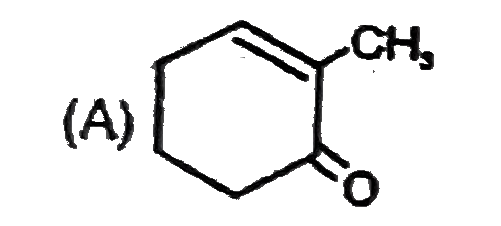
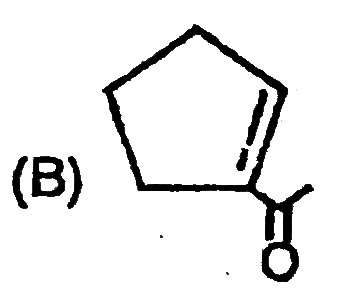
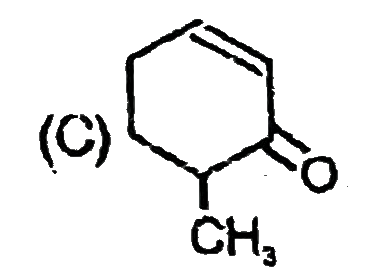
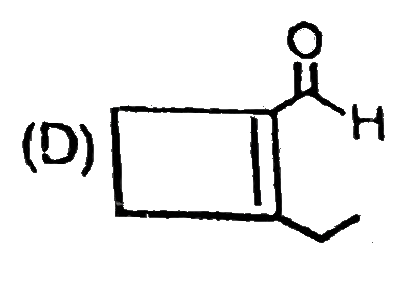
The correct Answer is:A
To solve the question regarding the intramolecular aldol condensation of 1-ethylcyclopent-1-ene followed by reductive ozonolysis and treatment with aqueous NaOH and heating, we can follow these steps:
Step 1: Understand the Structure of 1-Ethylcyclopent-1-ene
1-Ethylcyclopent-1-ene has a cyclopentene ring with an ethyl group attached to one of the carbon atoms. The structure can be represented as follows:
CH2|CH2−CH−CH2|CH
Step 2: Perform Reductive Ozonolysis
Reductive ozonolysis cleaves the double bond in alkenes to form carbonyl compounds. For 1-ethylcyclopent-1-ene, the ozonolysis will break the double bond and produce two carbonyl fragments. The expected products after ozonolysis are:
- An aldehyde from the ethyl side.
- A ketone from the cyclopentene side.
The structure after ozonolysis can be represented as:
O∣|CH2−CH−CHO|CH2
Step 3: Treat with Aqueous NaOH and Heat
The next step involves treating the ozonolysis product with aqueous NaOH and heating. The hydroxide ion (OH-) will act as a nucleophile and attack the carbonyl carbon of the aldehyde, leading to the formation of an alkoxide intermediate.
Step 4: Intramolecular Aldol Condensation
The alkoxide will then undergo intramolecular aldol condensation. The enolate formed from the ketone will attack the carbonyl carbon of the aldehyde, leading to the formation of a five-membered ring. The reaction can be summarized as follows:
1. The alkoxide attacks the carbonyl carbon of the aldehyde.
2. A tetrahedral intermediate is formed.
3. Elimination of water occurs, resulting in the formation of a double bond.
Step 5: Final Product
After the aldol condensation, the final product will be a cyclic compound with a double bond and a carbonyl group. The structure can be represented as:
O∣|CH2−CH−CH|CH2
Conclusion
The major product formed after the entire reaction sequence is a six-membered ring compound with a carbonyl group.
Final Answer
The final product after reductive ozonolysis followed by treatment with aqueous NaOH and heating is a cyclic compound with a six-membered ring.
---
1-Ethylcyclopent-1-ene has a cyclopentene ring with an ethyl group attached to one of the carbon atoms. The structure can be represented as follows:
Reductive ozonolysis cleaves the double bond in alkenes to form carbonyl compounds. For 1-ethylcyclopent-1-ene, the ozonolysis will break the double bond and produce two carbonyl fragments. The expected products after ozonolysis are:
- A ketone from the cyclopentene side.
The next step involves treating the ozonolysis product with aqueous NaOH and heating. The hydroxide ion (OH-) will act as a nucleophile and attack the carbonyl carbon of the aldehyde, leading to the formation of an alkoxide intermediate.
The alkoxide will then undergo intramolecular aldol condensation. The enolate formed from the ketone will attack the carbonyl carbon of the aldehyde, leading to the formation of a five-membered ring. The reaction can be summarized as follows:
2. A tetrahedral intermediate is formed.
3. Elimination of water occurs, resulting in the formation of a double bond.
After the aldol condensation, the final product will be a cyclic compound with a double bond and a carbonyl group. The structure can be represented as:
The major product formed after the entire reaction sequence is a six-membered ring compound with a carbonyl group.
The final product after reductive ozonolysis followed by treatment with aqueous NaOH and heating is a cyclic compound with a six-membered ring.
Topper's Solved these Questions
Similar Questions
Intramolecular aldol condensation :
The aldol condensation also offer a convenient way to synthesize molecules with five and six membered ring.This can be done by an intramolecular aldol condensation using a dialdehyde, a keto aldehyde or a diketone as the substrate.The major product is formed by the attack of the enolate from the ketone side of the molecule that adds to the aldehyde group.The reason the aldehyde group undergoes addition preferentially may arise from the greater reactivity of aldehyde towards nucleophilic addition.In reaction of this type five membered rings from far more readily than seven membered rings and six membered rings are more favourable than four or eight membered rings when possible.
The true statement about the major product of CH3−O∣∣C−CH2−CH2−CH2−CH2−O∣∣C−H in reaction with aq.NaOH followed by heating is.
View SolutionExplain the following reactions :
Aldol condensation
View SolutionExplain the following reactions :
Aldol condensation
View SolutionExplain the following reactions :
Aldol condensation
View SolutionExplain the following reactions :
Aldol condensation
View SolutionDescribe aldol condensation.
View SolutionDescribe aldol condensation.
View SolutionGive the aldol condensation product of:
a.
View SolutionConsider following intramolecular aldol condensation reaction
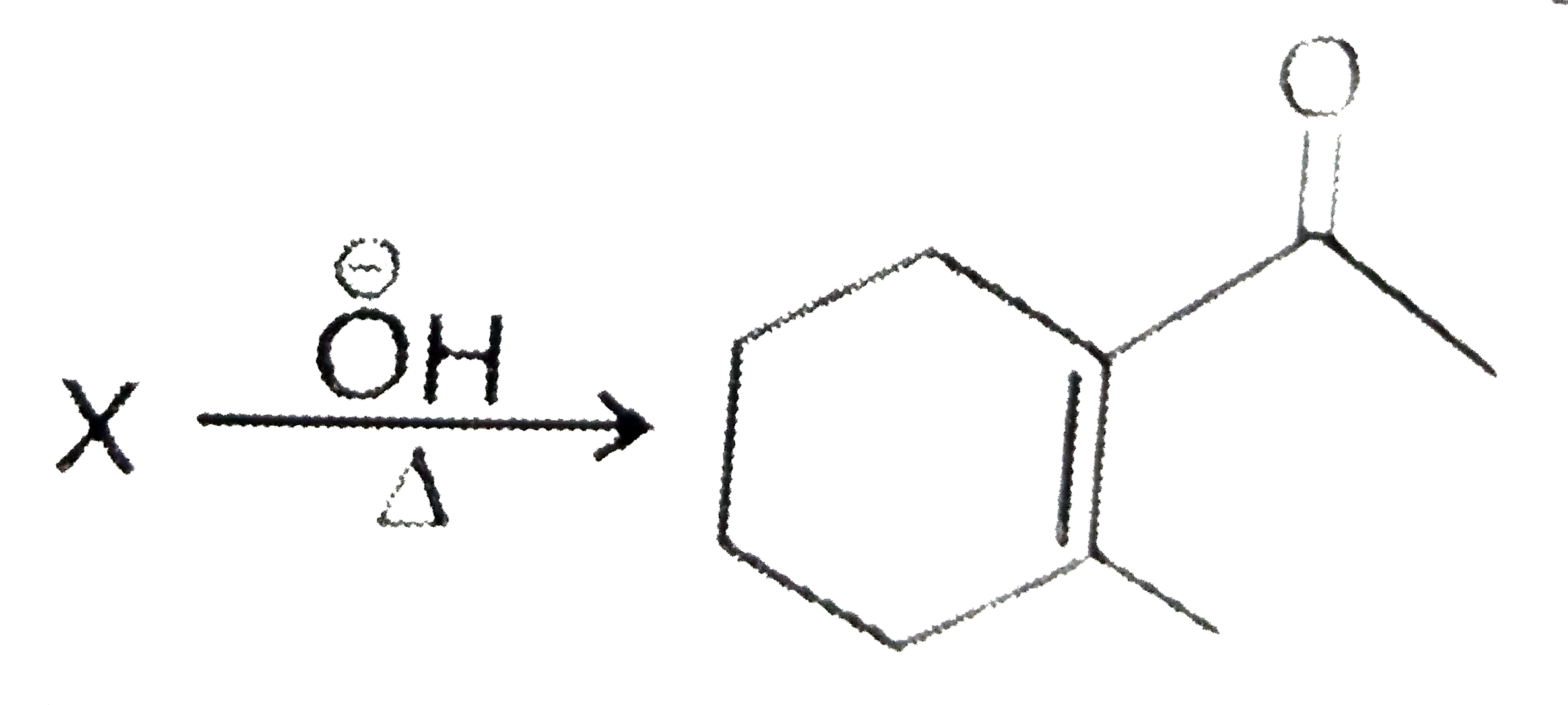
X can be
View SolutionAldol condensation will not take place in
View Solution

